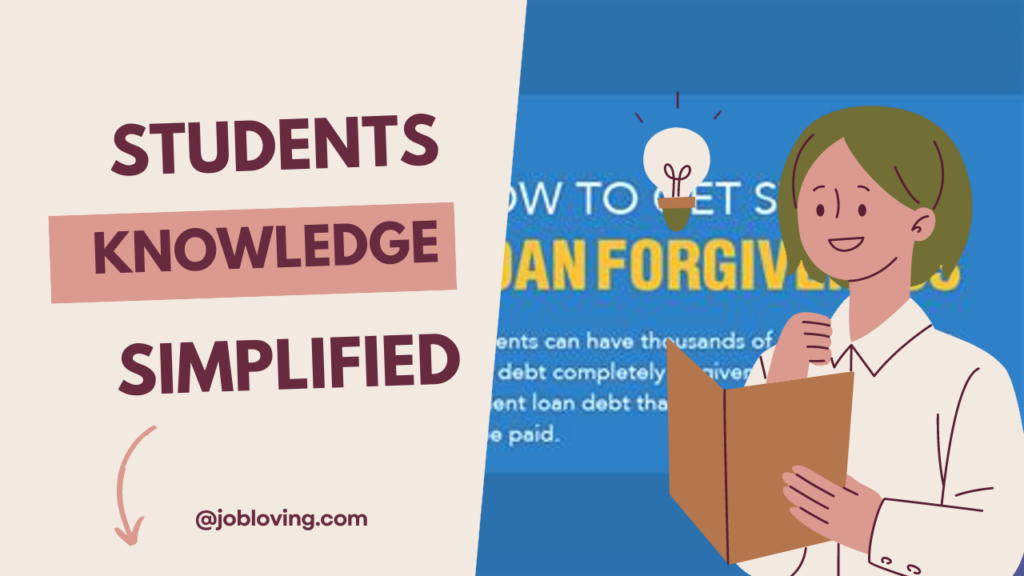Can I Still Apply to Have Student Loans Forgiven? Here’s What You Need to Know
Ever feel like you’re drowning in student loans? You’re not alone. Millions of borrowers are grappling with the burden of educational debt, and recent changes in federal policies have led to a kaleidoscope of options for student loan forgiveness. But the clock is ticking, and navigational cues seem as murky as a cloudy sky. So, can you still apply for student loan forgiveness? The answer is yes, but the landscape is loaded with specifics you need to be aware of. Let’s dive into how this all works and what deadlines might impact you.
Deadlines You Should Bookmark
If you’re feeling motivated to take action, here’s the scoop: The cutoff date to apply for the current student loan forgiveness programs is December 31, 2023. Checked your calendar? Good! Mark this date or risk losing your chance to take advantage of significant debt relief.
- Since the introduction of student loan forgiveness programs, over 4 million borrowers have received around $167.3 billion in relief. That’s not a drop in the bucket!
- Don’t get too comfy! The one-time account adjustment deadline is looming at June 30, 2024. This could make or break many borrowers, so prompt action is critical.
Is Your Loan Eligible?
Whether you’re contemplating forgiveness or consolidating your loans, understanding your eligibility is essential. The types of forgiveness programs vary distinctly. For example:
- Public Service Loan Forgiveness (PSLF): If you’re among those dedicated to government or nonprofit work, you’ll need to make 120 qualifying payments to have your remaining balance forgiven. Sounds straightforward? Fair warning: it typically takes around 10 years to complete!
- Teacher Loan Forgiveness: This program provides up to $17,500 toward your loans—but only if you’ve spent five years teaching in low-income schools. Talk about an incentive to mold young minds!
- Closed School Discharge: Were you enrolled in a school that closed? You might be eligible to eliminate your debt through this program. But you need proof.
Consolidation: The Gateway to Forgiveness
Have Federal Family Education Loans (FFEL)? If so, consider consolidating them into Direct Loans. This move is essential for qualifying for the PSLF. It’s like jumping through a hoop—annoying, yes, but it gets you to the other side!
New Policies and Their Impact
The education landscape has seen updates aimed at providing relief to low-income borrowers. Recent changes may allow more people to access various programs they previously thought they didn’t qualify for, shifting the ocean of opportunity for borrowers. However, keep an eye out for legal challenges that could complicate the relief landscape even further.
- The SAVE Plan is a notable initiative that offers faster forgiveness based on your repayment schedule. With this plan, relief can happen within 10-25 years based on your loan balance—definitely something to consider if you’re feeling the crunch.
- But before you dive in, always check StudentAid.gov. Their database is your friend when understanding eligibility requirements across multiple forgiveness programs.
All Eyes on Biden’s Back-Up Plan
Policy changes are abundant and sometimes perplexing. The Biden administration’s tentative Plan B could potentially cost upwards of $84 billion. But hold on; it’s not all rainbows and sunshine—there’s mounting legal scrutiny around this proposal, which may affect how and when it rolls out.
A Dance with Income-Driven Repayment Plans
If you’re strapped for cash, look no further than income-driven repayment plans. These plans cater to your financial situation and could result in payments as low as $0 a month. Stay on top of recertifying your income and family size annually to remain eligible for these income-centric options.
Forgiveness and the Tax Implications
One aspect that many borrowers don’t consider is the tax implications tied to forgiven loans. Generally, forgiven student loans are considered taxable income, which could leave you with an unexpected financial hangover after the elation of debt relief. However, the good news is that under the American Rescue Plan, debt forgiven through 2025 is exempt from federal taxes. Keep those savings in mind!
Teacher and Public Service Options
Combining Public Service Loan Forgiveness with Teacher Loan Forgiveness is intricate but can be advantageous. Just remember that combining them can extend your timeline for forgiveness, necessitating patience and commitment to your service field.
Taking the Steps Necessary
Want the most out of your student loan forgiveness options? Begin with a thorough understanding of eligibility criteria and be ready to submit the appropriate applications before deadlines. Federal forgiveness programs are strict, and missing a deadline could mean missing out—a nightmare for a borrower!
Identifying Opportunities for Relief
Don’t forget to explore all the options available! From state-specific loan forgiveness programs to initiatives aimed at healthcare and law professionals in high-need areas, the diversity in available programs is vast. Awareness is key—being in the know is not only empowering but can provide the relief you never knew was within your grasp!
Continuous Monitoring of Policies
Given the fast-paced changes in educational policies regarding student loans, regularly checking for updates from the Federal Student Aid website is critical. They’ll keep you in the loop about any policy changes that could alter your course toward forgiveness.
Conclusion: Make Your Move!
In a world where student loan forgiveness options abound but often confuse, arming yourself with knowledge is your ultimate tool. Whether it’s understanding the nuances between deferment, forbearance, and forgiveness, or knowing how to strategically consolidate your loans, every step is crucial. So yes, you can still apply for student loan forgiveness, but make sure you do it smartly, staying aware of all the intricacies involved. Your financial future could see a significant shift—just keep those eyes peeled and those deadlines on your radar!
Now, go forth and conquer that student loan debt. Who knows? You might just find yourself free-er than you thought possible!

